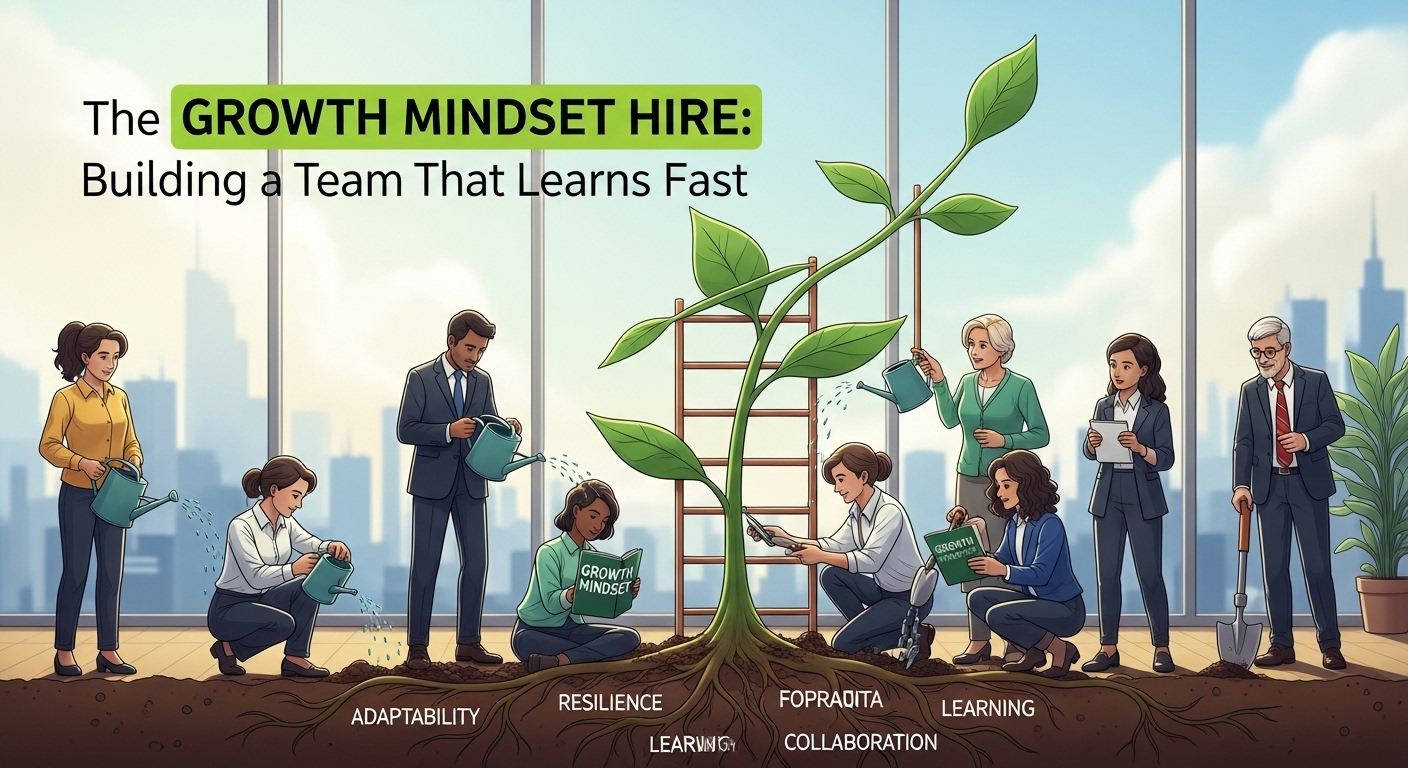In today’s evolving workplace, a seat on the team is less about what a person already knows and more about how they engage with learning and change. That’s where hiring for a growth mindset becomes a strategic advantage. When you bring in people who believe their abilities can be developed, you build a team that adapts, innovates, and thrives.
What is a growth mindset?
Developed by psychologist Carol S. Dweck, a growth mindset describes individuals who believe their talents and intelligence can be developed through effort, learning and good strategies. On the other hand, a fixed mindset assumes ability is largely static. Those with a fixed mindset may avoid challenges or give up easily. Those with a growth mindset embrace challenges, persist through setbacks and view feedback as a path to improvement. For employers looking to build resilient teams, this distinction matters.
Why this hire matters especially now
In uncertain markets, technological shifts, hybrid work models and evolving job-roles mean new hires must adapt quickly. By prioritizing mindset over perfect experience, organizations gain more flexibility. When you hire someone with the right attitude, you reduce the risk of early stagnation. That means faster onboarding, better adaptation to change and stronger long-term contribution.
How to identify and hire for growth mindset
- Use growth-oriented interview questions. Ask about a time the candidate made a mistake and what they learned. These types of questions help surface how a person thinks about growth.
2. Evaluate learning behavior, not just past achievement. Look for evidence of continuous development, whether through side projects, mentoring, or self-directed skill growth.
3. Craft role descriptions and culture messages that emphasize development.
4. Support growth after hire. Hire for mindset, then reinforce it with onboarding. Culture matters. Even the most growth-oriented hire will underperform in a fixed-mindset environment.
The impact on team performance
Teams composed of growth-oriented individuals tend to:
- Adapt faster to new technologies and processes.
- Collaborate more effectively, as growth-mindset employees seek feedback and support from peers.
- Drive innovation, seeing failure not as an endpoint, but as a stepping-stone.
- Stay with the company longer, feeling engaged in continuous development rather than stuck in a role.
Conclusion
When you hire someone with a growth mindset, you’re investing in the future. Shift your lens to mindset and cultural fit. Build teams that evolve. A growth-minded workforce is your best hedge against change, your strongest engine for innovation, and your most reliable path to sustained success.

